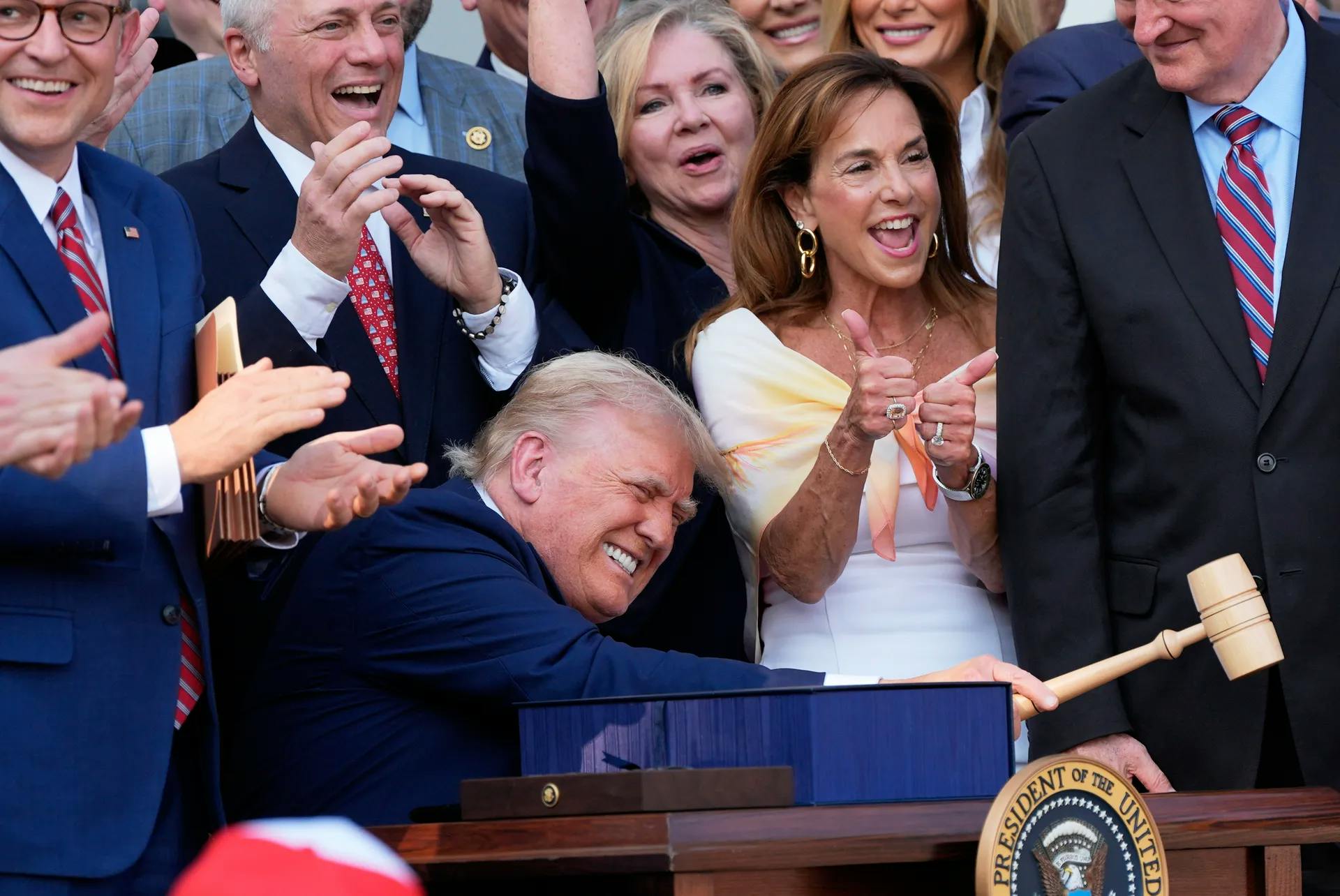
On July 3, 2025, President Trump signed a sweeping tax-and-spending package into law. Dubbed the “one big beautiful” bill, it’s being called one of the most significant overhauls of domestic policy in recent years. With changes that touch everything from income taxes to student loans and clean energy credits, this legislation could have a direct impact on household budgets across the country.
Here’s what you need to know about how it might affect your finances.
Permanent Tax Cuts and New Deductions
The bill makes permanent many of the tax cuts from Trump’s 2017 Tax Cuts and Jobs Act. These include lower tax brackets, increased standard deductions, a more generous child tax credit, and higher estate and gift tax exemptions.
Key changes:
- The standard deduction rises slightly to $15,750 for single filers and $31,500 for married couples.
- The child tax credit increases to $2,200 per child, with up to $1,700 refundable.
- The estate and gift tax exemption grows to $15 million for individuals and $30 million for couples.
- The state and local tax (SALT) deduction cap rises from $10,000 to $40,000 through 2029 before reverting.
These changes generally favor middle- and higher-income households, while lower earners may see little benefit unless they itemize deductions.
New Relief for Seniors
A new “senior bonus” offers taxpayers over age 65 a temporary enhanced deduction of up to $6,000 for single filers and $12,000 for couples. This deduction applies to those earning up to $75,000 (or $150,000 for married couples) and phases out above those thresholds. It’s in effect from 2025 through 2028.
Cuts to Safety Net Programs
To offset tax breaks, the bill implements deep spending cuts in federal programs.
- Medicaid faces about $1 trillion in cuts, with new work requirements for adults ages 19 to 64 and more frequent eligibility checks. The Congressional Budget Office estimates 7.8 million people could lose coverage by 2034.
- The Supplemental Nutrition Assistance Program (SNAP) sees reduced federal funding. States may have to cover a portion of benefits or risk cutting assistance altogether. New work requirements extend to adults up to age 64, potentially affecting millions of families.
Changes for Families and Students
The legislation creates “Trump Accounts” for children born between 2025 and 2028. These tax-advantaged accounts come with a $1,000 federal deposit and allow annual contributions of up to $5,000 from parents and $2,500 from employers.
For student borrowers, the bill tightens federal loan limits:
- Graduate loans are capped at $20,500 per year and $100,000 lifetime.
- Professional degrees have separate caps of $50,000 annually and $200,000 lifetime.
- Parent PLUS loans are limited to $20,000 per student per year and $65,000 total.
It also reduces repayment options, eliminating deferments for unemployment or economic hardship.
New and Expanded Deductions
The bill introduces temporary deductions to address common expenses:
- Car loan interest deduction of up to $10,000 annually for U.S.-built vehicles (2025–2028).
- Tip income deduction of up to $25,000 annually for workers in tipping industries, phasing out for higher earners.
- Overtime pay deduction of up to $12,500 for single filers and $25,000 for couples.
End of Clean Energy Incentives
The legislation ends several tax credits tied to clean energy:
- $7,500 credit for new electric vehicles and $4,000 for used EVs expire after September 2025.
- Credits for energy-efficient home upgrades disappear after December 2025.
These cuts roll back programs from the Inflation Reduction Act of 2022, which aimed to incentivize green technologies through 2032.
Private School Scholarship Credits
Starting in 2027, taxpayers can claim a 100% credit for donations up to $1,700 to nonprofits that fund K-12 private school scholarships. This provision is optional for states to adopt.
Pass-Through Business Deduction
The bill permanently extends the 20% pass-through income deduction for small businesses, freelancers, and contractors. Originally part of the 2017 tax cuts, this provision was set to expire after 2025.
The Bottom Line
Trump’s “one big beautiful” bill brings a mix of permanent tax relief and targeted deductions, alongside deep spending cuts to social programs. Middle- and higher-income Americans stand to gain the most from expanded deductions and credits, while lower-income households could face new challenges as safety nets tighten.
For families, students, and small business owners, the changes could mean both opportunities and obstacles. Staying informed and adjusting financial plans now may help households prepare for the shifting landscape.